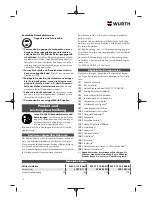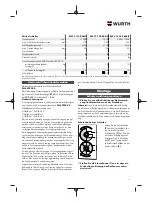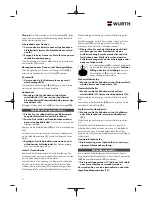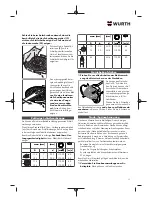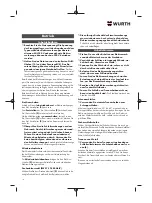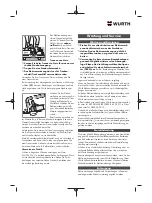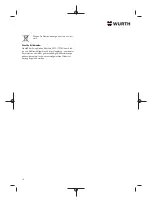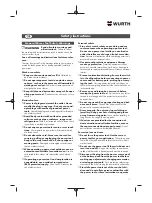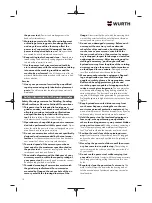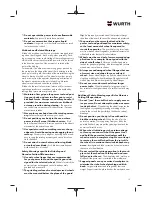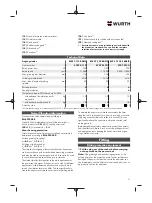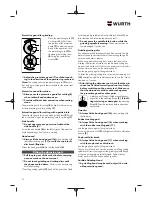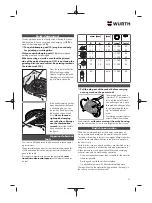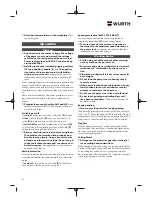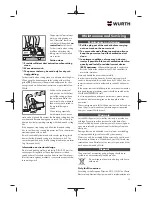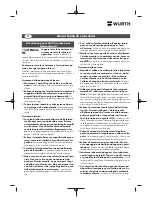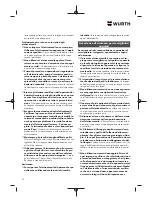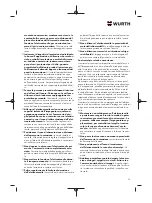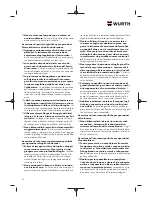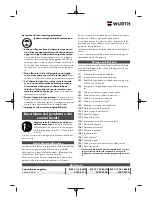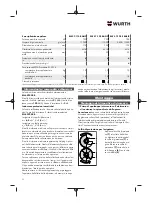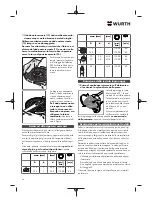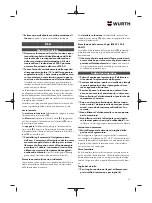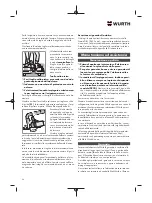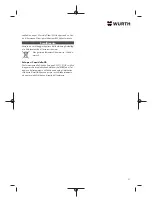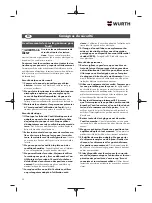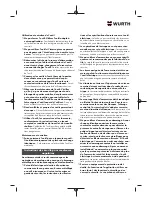
r
Avoid dust accumulation at the workplace.
Dust
can easily ignite.
Operation
Start-up
r
Pay attention to the mains voltage. The voltage
of the power source must match the voltage
specified on the rating plate of the power tool.
Power tools marked with 230 V can also be op-
erated with 220 V.
r
Hold the tool by the insulated gripping surfaces
(14)
and auxiliary handle (4)
only.
The applica-
tion tool could come into contact with hidden
wiring or its own cord.
Contact with live wires may
make metal parts of the tool live, posing a risk of electric
shock.
When operating the power tool using a mobile generator that
does not have sufficient reserve capacity or an adequate
voltage control system with inrush current boost converter, loss
of performance or atypical behaviour may occur upon switch-
on.
Please check the suitability of the power generator you are us-
ing, particularly with regard to the mains voltage and fre-
quency.
r
Products that are only sold in AUS and NZ:
Use a
residual current device (RCD) with a nominal residual cur-
rent of 30 mA or less.
Switching on/off
To
start
the power tool, push the on/off switch
(2)
forward.
To
lock
the on/off switch
(2)
in position, push the on/off
switch
(2)
forward and down until it clicks into place.
To
switch off
the power tool, release the on/off switch
(2)
;
or, if the switch is locked, briefly push the on/off switch
(2)
backward and down and then release it.
r
Always check abrasive tools before using them.
The abrasive tool must be fitted properly and
be able to move freely. Carry out a test run for
at least one minute with no load. Do not use ab-
rasive tools that are damaged, run untrue or vi-
brate during use.
Damaged abrasive tools can burst
apart and cause injuries.
Restart protection
The restart protection feature prevents the power tool from un-
controlled starting after the power supply to it has been inter-
rupted.
To
restart
the tool, set the on/off switch
(2)
to the off posi-
tion and then switch the power tool on again.
Speed preselection (EWS 7-125 E BASIC)
You can preselect the required speed using the speed
preselection thumbwheel
(3)
, even during operation.
r
The rated speed of the accessory must be at
least equal to the maximum speed marked on
the power tool.
Accessories running faster than their
rated speed can break and fly apart.
Working Advice
r
Pull the plug out of the socket before carrying
out any work on the power tool.
r
Exercise caution when cutting slots in structural
walls; see the "Information on structures" sec-
tion.
r
Clamp the workpiece if it is not secure under its
own weight.
r
Do not load the power tool so heavily that it
comes to a stop.
r
If the power tool has been subjected to a heavy
load, continue to run it at no-load for several
minutes to cool down the accessory.
r
Do not use the power tool with a cut-off stand.
r
Do not touch grinding and cutting discs until
they have cooled down.
The discs can become very
hot while working.
Rough grinding
r
Never use cutting discs for rough grinding.
The best rough grinding results are achieved with a set angle
of 30° to 40°. Move the power tool back and forth with mod-
erate pressure. This will ensure that the workpiece does not be-
come too hot or discolour and that grooves are not formed.
Flap Disc
With the flap disc (accessory), curved surfaces and profiles
can be worked. Flap discs have a considerably higher service
life, lower noise levels and lower sanding temperatures than
conventional sanding sheets.
Cutting Metal
r
Always use the protective guard for cutting (8)
when cutting bonded abrasives.
When carrying out abrasive cutting, use a moderate feed that
is suited to the material being machined. Do not exert pressure
on the cutting disc and do not tilt or swing the power tool.
Do not attempt to reduce the speed of a cutting disc coming to
a stop by applying pressure from the side.
24

